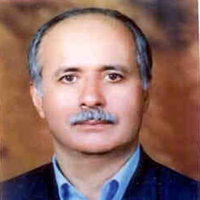Analysis of the Model of Sustainable Development Planning in Rural Economy of Iran (Case Study: Yazd Province)
The present study was undertaken to explore the model of the sustainable development planning of rural economy in Yazd province.
This is an applied research that draws on an exploratory approach for data collection and is descriptive-analytical with regard to the description of characteristics. The main research instrument was a questionnaire coupled with semi-structured interviews. The statistical population of the study consisted of government actors in Yazd province, who were selected using multi-stage sampling method.
The findings of this research indicated that planning sustainable development of rural economy in Yazd province has been consistent with the rational approach in terms of characteristics and compatible with the operational planning in terms of pattern. The central planning process has been top-down, and therefore, the local communities have not been involved in any of the planning processes.
The dominance of the traditional views on planning and the absence of stakeholders and locals in the planning framework has led to seven decades of ineffective development programs in Iran. Therefore, changing the planning pattern from the traditional (rational) to new (interactive-communicative) approach, which would lead to decentralization and the establishment of a public involvement in the planning system, especially in rural development, can help cope with the shortcomings of seven decades of rural development programs in Iran in general, and Yazd province in particular.
Trusting people and utilizing the knowledge of rural people, especially the educated and young people, not only in planning but also in managerial positions such as district deputy in which the candidates are chosen among the local people, use of regional potentials such as Basij of Engineers to set up small knowledge-based circles at the city level and specialization of rural districts are some of the solutions that can trigger rural development under an interactive pattern.
It is also important to identify the model that is employed by the dominant approach to development planning in a country. Based on this model, many features such as the extent of concentration and the role of people in the planning system, the role of local potentials and the limitations in planning, the place of monitoring and evaluation, among other things, in fostering development can be identified.
- حق عضویت دریافتی صرف حمایت از نشریات عضو و نگهداری، تکمیل و توسعه مگیران میشود.
- پرداخت حق اشتراک و دانلود مقالات اجازه بازنشر آن در سایر رسانههای چاپی و دیجیتال را به کاربر نمیدهد.




